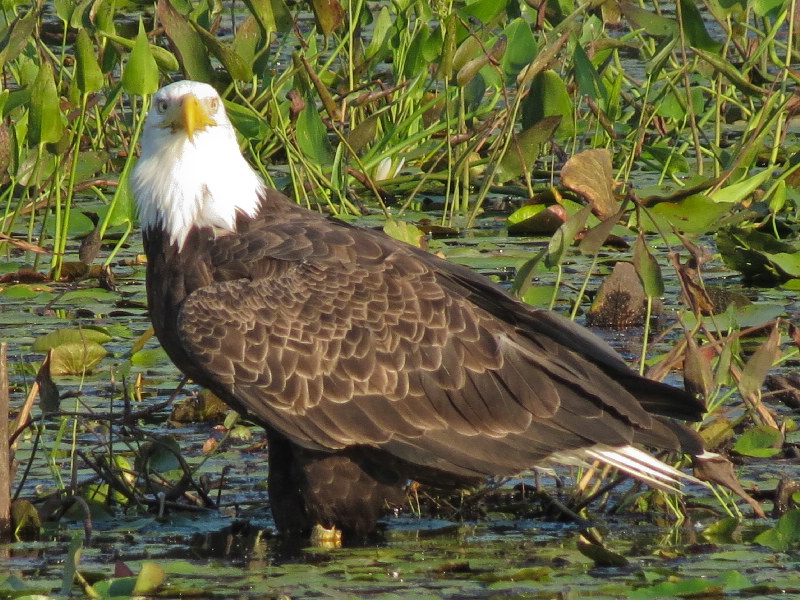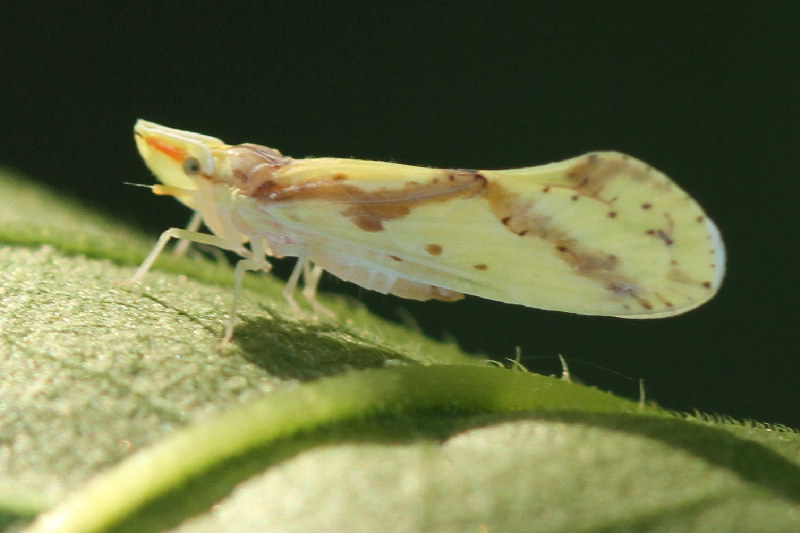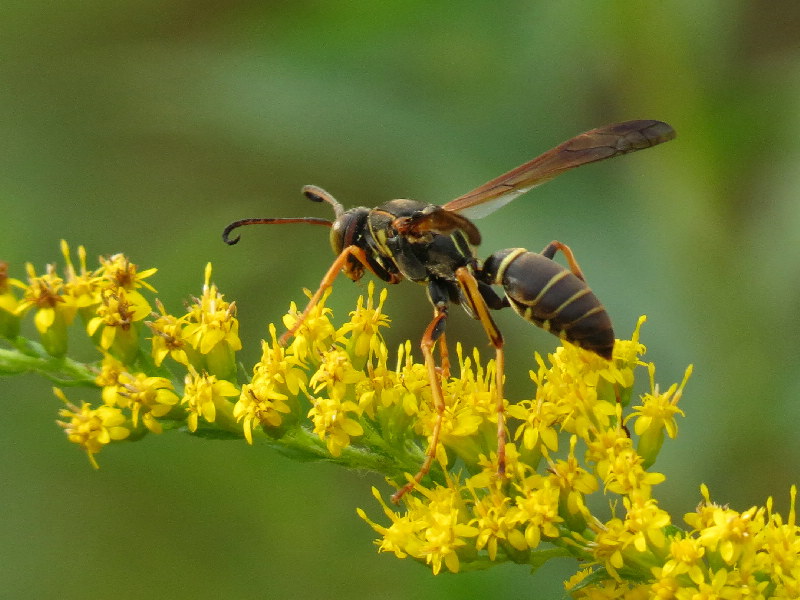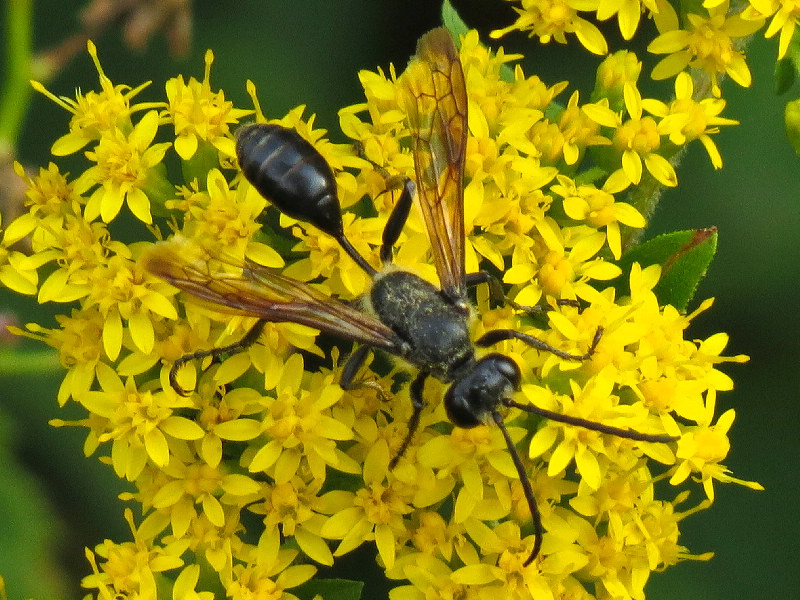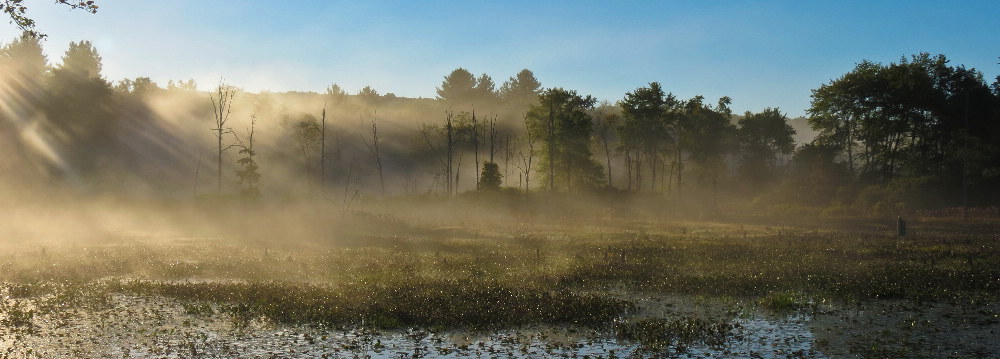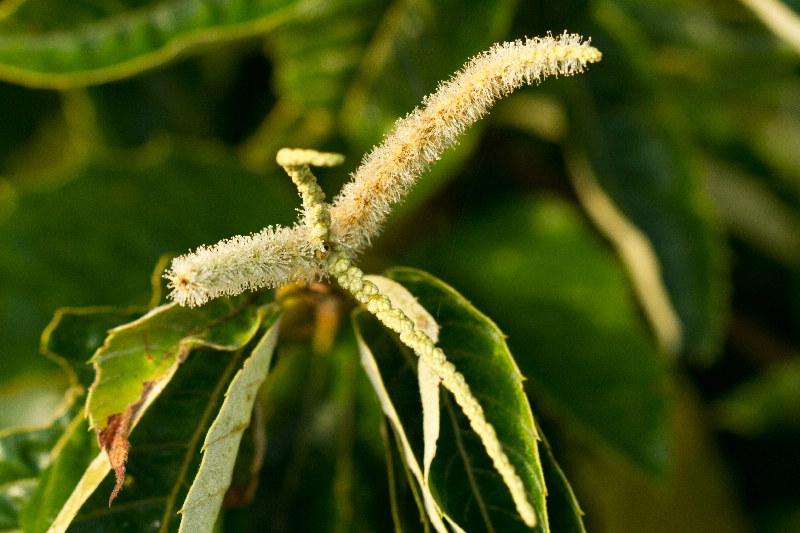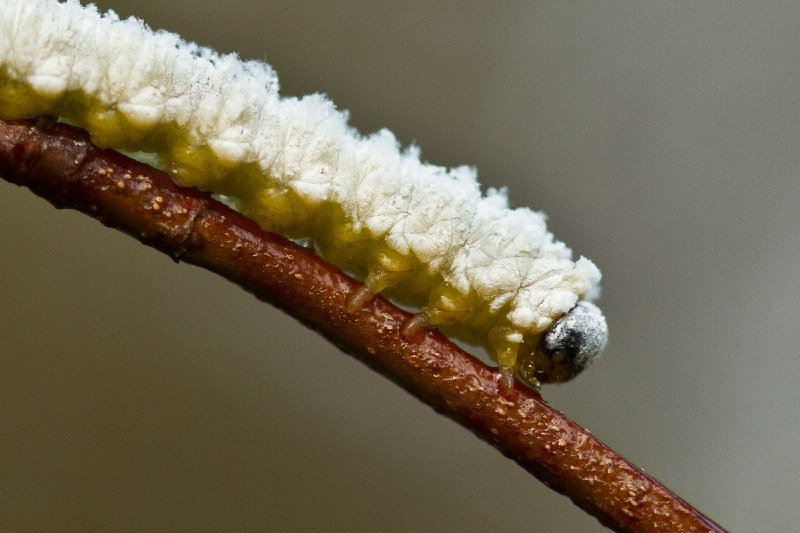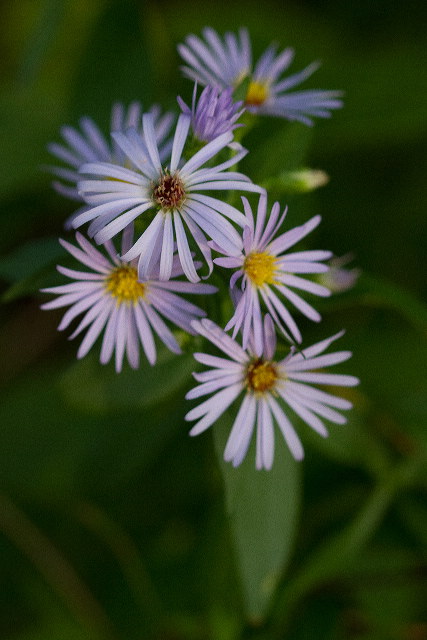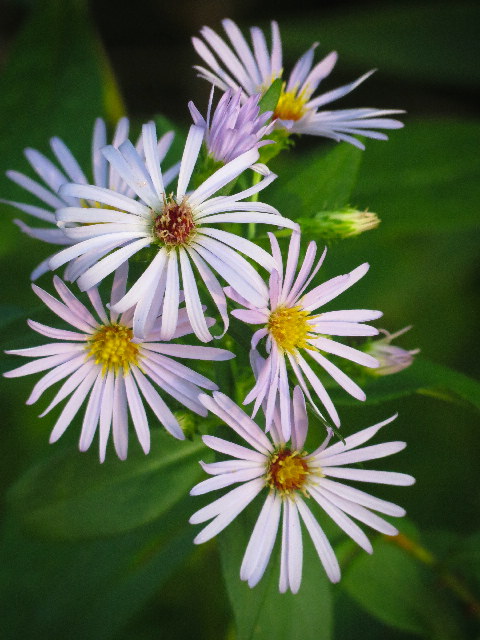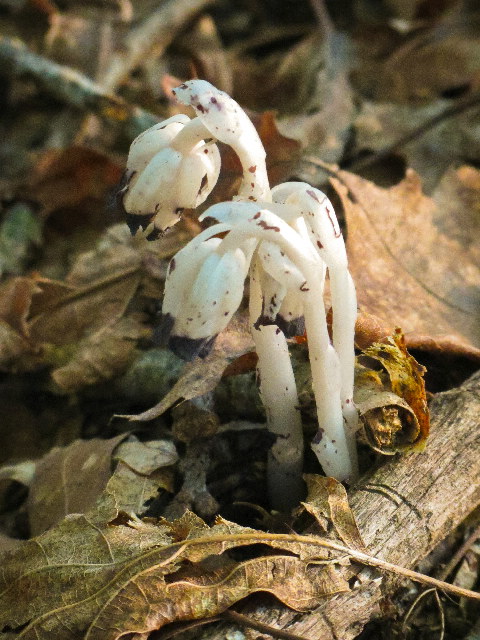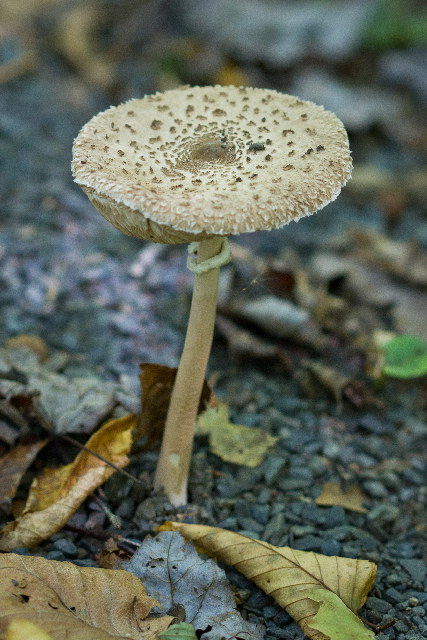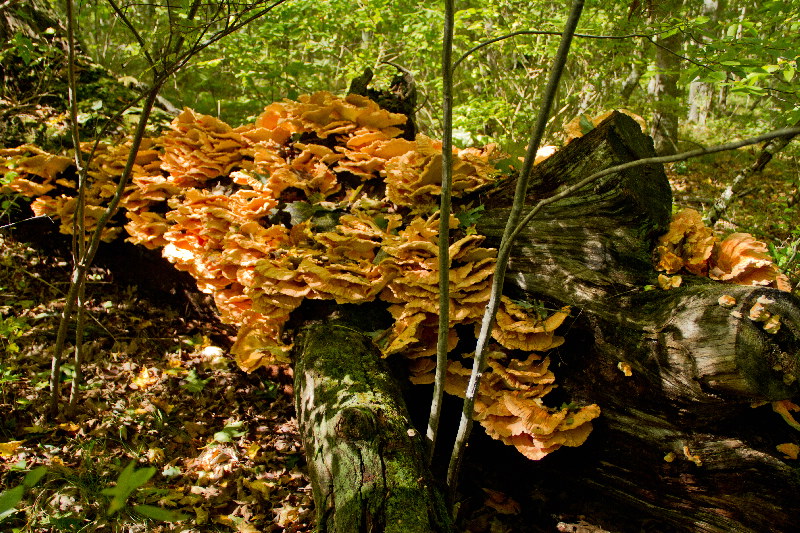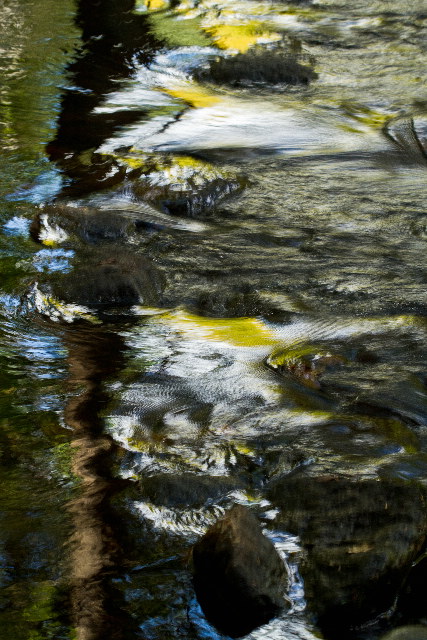Along the Air Line... 2012 - Summer, Part 7 The Air Line Trail in Eastern Connecticut - Stan Malcolm Photos |
mHome Page Stan's FlickR Albums |
August 31st, late afternoon. Only the second Bald Eagle (Haliaeetus leucocephalus) I've seen in the eleven years I've walked at Raymond Brook Marsh. |
An unexpected pleasure as by that point I thought I had seen all I would see along the trail for the day. |
|
|
|
A short hop to a new perch. (Not surprisingly, the bird is banded.) |
|
|
|
|
|
Up, up... |
...and away! |
A White-tailed Deer doe (Odocoileus virginianus) not far from where I saw a buck and two does earlier in the day. |
A very moth-like planthopper. |
One of many Hickory Tussock Moth (Lophocampa caryae) caterpillars on the wooded portion of the trail. In early mornings, these are often hanging by a silked thread about chest high above the trail. My guess is that this is an overnight resting strategy safe from predators. (Can anyone confirm or suggest an alternative explanation?) |
A Northern WAter Snake (Nerodia sipedon) crossing the trail. |
At the old United Distillers factory, chain link fence with barbed wire top is now complete. |
September 6th. Hops (Humulus lupulus); the first time I've noticed it along the trail. It's growing at the parking area where the trail crosses Rt 207. Technically, Hops is a "bine", not a vine because it lacks tendrils. More about Hops. |
These are the female catkins used in making beer. Many of the leaves were severely chewed - perhaps by scarab or leaf beetle larvae, but hopefully by Questionmark or Comma butterflies: I'll have to pay attention next year. |
Still September 6th. A cloudy afternoon visit to Raymond Brook Marsh found several Painted Turtles (Chrysemys picta) basking in the... shade. |
Check out the eyes on this Deerfly (Chrysops sp.), hopefully among the last of the year. The tan structure below the head that looks suspiciously like an upright vacuum cleaner is the labium. In fact, it acts like a cross between a vacuum and a sponge, sopping up fluids and channeling them to the mouth. |
A male Vespid wasp (Family Vespidae, Polistes sp.). Males' antennae curl at the tip, and also have a yellow face not visible in this photo. Of course males cannot sting. The family Vespidae is define in part by how they hold their front wings pleated when at rest. |
A different wasp, this with a more pronounced petiolate abdomen and wings NOT pleated. |
The family Sphecidae is usually a good guess for wasps like these. |
September 11th. Fortyone degrees. Mist rising from Raymond Brook Marsh. |
|
Sun and mist at the United Distillers pond on the Colchester Spur. |
|
|
|
September 13th. A female Wolf Spider (Family Lycosidae) covered with her young spiderlings and (unseen in this photo) still dragging her egg sack behind her. |
The young spiders stay with her for months. She, and they, are speckled with dew. |
September 14th. Thick haze over the sun quickly burned off. |
|
Hidden in plain sight: an American Chestnut (Castanea dentata) where the trail crosses Route 207. A rare treat to see this species that was so nearly exterminated by blight. |
|
Oddly, it's flowering at the same time the seed pods are maturing. |
Lots of Sawfly larvae about. (Family Tenthredinidae) |
These were covered dorsally with a white waxy bloom. |
Fall Asters in late afternoon at Raymond Brook Marsh. |
|
Indian Pipes (Monotropa uniflora). |
|
September 16th. West of Route 207. Rattlesnake Plantain, an orchid (Goodyera pubescens). |
Parasol mushroom (Lepiota procera). |
September 18th. Ornamental Sunflower at the Route 85 trail head. |
September 20th. Early afternoon, west of Grayville Road. The largest cluster of Chicken Mushrooms (Laetiporus sulphureus) that I've seen. Edible, and considered "choice" according to te Audubon Society field guide. |
|
|
Asters on a side trail approaching Judd Brook. |
A large Chanterelle. |
(I won't guess.) |
Reflections on Judd Brook at the junction with the Jeremy River. |
|
|
|
The falls at the Judd Brook bridge. |
Upstream on Judd Brook at the former site of a mill. |


